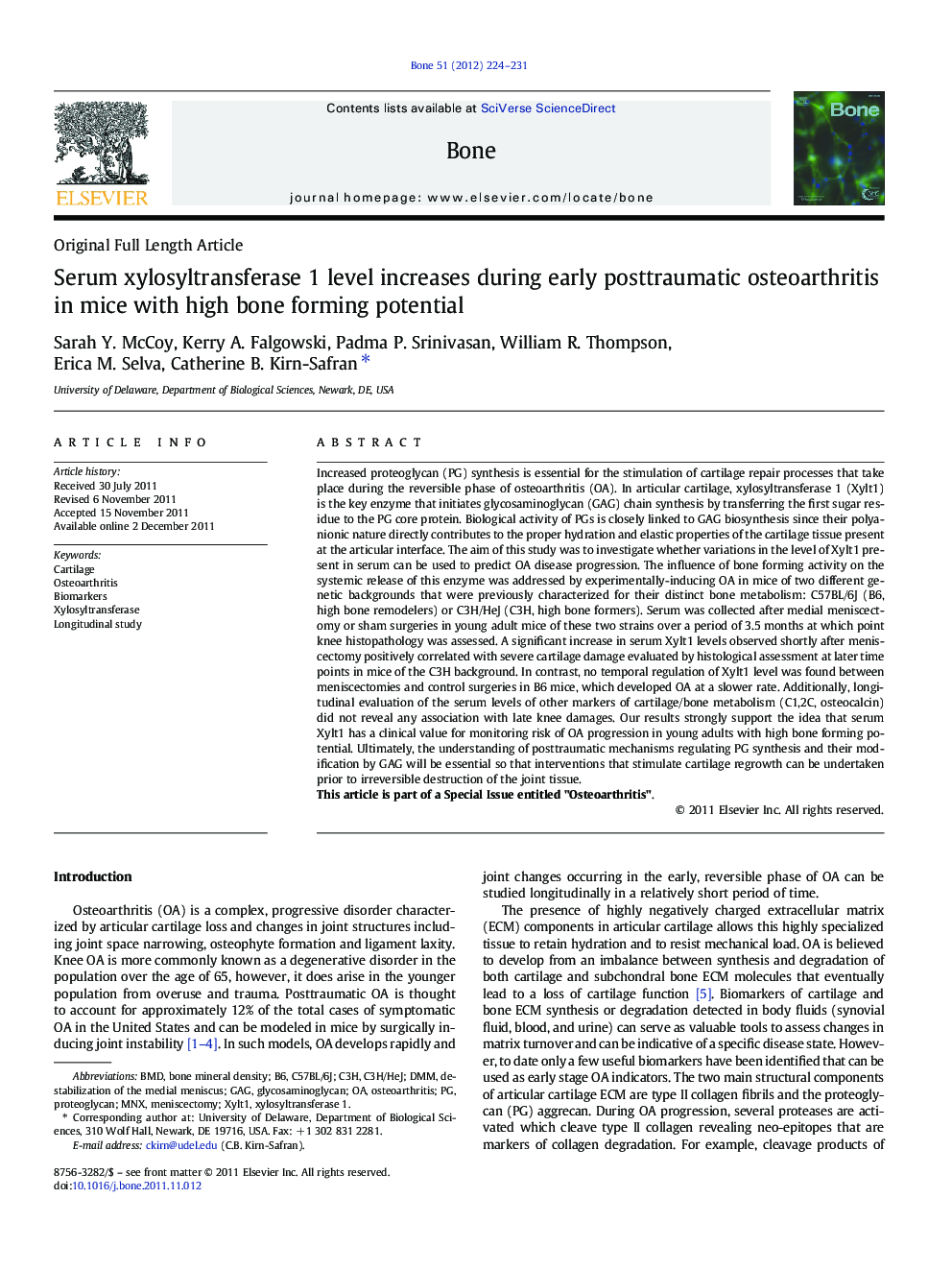| کد مقاله | کد نشریه | سال انتشار | مقاله انگلیسی | نسخه تمام متن |
|---|---|---|---|---|
| 2779318 | 1153266 | 2012 | 8 صفحه PDF | دانلود رایگان |

Increased proteoglycan (PG) synthesis is essential for the stimulation of cartilage repair processes that take place during the reversible phase of osteoarthritis (OA). In articular cartilage, xylosyltransferase 1 (Xylt1) is the key enzyme that initiates glycosaminoglycan (GAG) chain synthesis by transferring the first sugar residue to the PG core protein. Biological activity of PGs is closely linked to GAG biosynthesis since their polyanionic nature directly contributes to the proper hydration and elastic properties of the cartilage tissue present at the articular interface. The aim of this study was to investigate whether variations in the level of Xylt1 present in serum can be used to predict OA disease progression. The influence of bone forming activity on the systemic release of this enzyme was addressed by experimentally-inducing OA in mice of two different genetic backgrounds that were previously characterized for their distinct bone metabolism: C57BL/6J (B6, high bone remodelers) or C3H/HeJ (C3H, high bone formers). Serum was collected after medial meniscectomy or sham surgeries in young adult mice of these two strains over a period of 3.5 months at which point knee histopathology was assessed. A significant increase in serum Xylt1 levels observed shortly after meniscectomy positively correlated with severe cartilage damage evaluated by histological assessment at later time points in mice of the C3H background. In contrast, no temporal regulation of Xylt1 level was found between meniscectomies and control surgeries in B6 mice, which developed OA at a slower rate. Additionally, longitudinal evaluation of the serum levels of other markers of cartilage/bone metabolism (C1,2C, osteocalcin) did not reveal any association with late knee damages. Our results strongly support the idea that serum Xylt1 has a clinical value for monitoring risk of OA progression in young adults with high bone forming potential. Ultimately, the understanding of posttraumatic mechanisms regulating PG synthesis and their modification by GAG will be essential so that interventions that stimulate cartilage regrowth can be undertaken prior to irreversible destruction of the joint tissue. This article is part of a Special Issue entitled "Osteoarthritis".
► Serum level of xylosyltransferases is an indicator of proteoglycan synthesis rate.
► Serum Xylt1 level transiently increases following meniscectomy only in C3H/HeJ mice.
► Meniscectomy induces faster OA progression in C3H/HeJ mice than in C57BL/6J mice.
► Early increase in serum Xylt1 correlates with later cartilage damage in C3H/HeJ.
► Serum levels of Xylt1 may be used as a biomarker to predict OA.
Journal: Bone - Volume 51, Issue 2, August 2012, Pages 224–231